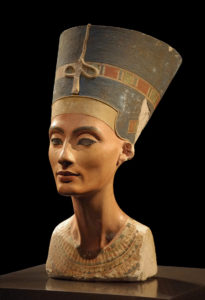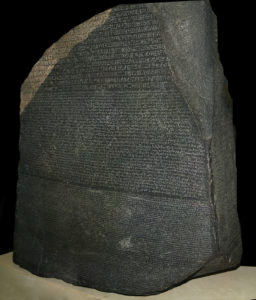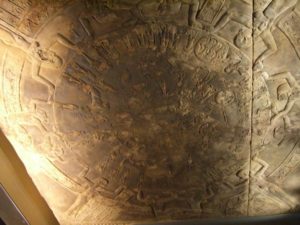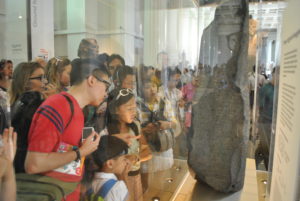Zahi Hawass, former Egyptian antiquities minister, is putting together a private team of experts to pressure cultural institutions to return priceless artifacts
Prominent Egyptian archaeologist and former Antiquities Minister Dr. Zahi Hawass is launching a campaign to repatriate ancient Egyptian treasures housed in foreign – mostly European – museums.
Hawass told The Media Line that he is putting together a committee of “Egyptian intellectuals and foreigners” to press the British Museum in London, the Louvre in Paris, two museums in Germany and one in Boston to return five important artifacts to Egypt.
“They are unique objects and aren’t supposed to be outside as they left the country illegally,” Hawass said. “The Europeans who used to take these say that African countries aren’t capable enough to preserve their heritage. But now, we are finishing the best and largest archeological museum in the world … the Grand Egyptian Museum (GEM), which is unparalleled. These artifacts will be shown in a beautiful way for the first time.”
The idea to have these items returned to Egypt first arose in 2005 during the initial construction phases of the Grand Egyptian Museum, which is scheduled to open in Cairo at the end of the year. The museum will hold an extensive archaeological collection of some 50,000 artifacts, in addition to an exhibition of the full tomb collection of King Tutankhamun.
Hawass’ campaign will focus its efforts on the following five priceless artifacts: the Rosetta Stone at the British Museum; a famous bust of Nefertiti (1345 BCE) located in Berlin’s Neues Museum; the Dendera zodiac sculpture (ca. 50 BCE) in the Louvre Museum; a statue of Hemiunu (Old Kingdom) at the Roemer and Pelizaeus Museum in Hildesheim, Germany; and a bust of Prince Ankhhaf (ca. 2520-2494 BCE) located in the Museum of Fine Arts in Boston.
According to the Egyptologist, out of the five items he requested, only the bust of Ankhhaf and the statue of Hemiunu were taken out of Egypt legally.
“The only museum that agreed to send the artifact on loan was the Hildesheim [museum],” Hawass revealed. “The other four museums refused and gave very strange reasons as justification.”
Hawass said that one museum denied his loan request out of concerns that the artifact’s presence in Egypt could spark protests in Tahrir Square and demands for it to remain in the North African country permanently. In response to this fear, the archaeologist retorted that the Egyptians are not “pirates of the Caribbean.”
This holiday season, give to:
Truth and understanding
The Media Line's intrepid correspondents are in Israel, Gaza, Lebanon, Syria and Pakistan providing first-person reporting.
They all said they cover it.
We see it.
We report with just one agenda: the truth.


“If we sign a contract, we will respect the contract,” he asserted.
The bust of Nefertiti, one of the prized items his team will work on repatriating, was excavated by a German archaeological team in 1912 and has been displayed in several German museums over the years. The painted stucco-coated limestone sculpture is one of the most iconic depictions of women in the ancient world and has been the subject of ongoing disputes between Egypt and Germany for decades.

Bust of Nefertiti, 18th Dynasty, Egypt., at the Neues Museum in Berlin. (Wikimedia Commons/Philip Pikart)
“The rules at that time [of the bust’s discovery] were that if anyone discovered an intact tomb, nothing [found] could be taken out of the country,” Hawass said, adding that the German team led by Ludwig Borchardt that uncovered the Nefertiti bust lied about the importance of their findings in order to deceive the authorities.
“Borchardt took the bust to Germany, hid it for 10 years and then he exhibited it publicly,” Hawass noted. “At that time, Egypt asked for [its] return.”
During the 1930s, other attempts at restituting the bust of Nefertiti were rebuffed as well, with Hitler refusing Egyptian requests and saying, “I will build her a museum in Berlin.”
The Rosetta Stone, another artifact included on Hawass’ list, is among the most famous inscriptions in the world. Discovered by a French expedition in 1799, the stone slab is a fragment of a larger stele and includes three versions of a decree that were issued in Memphis, Egypt in 196 BCE during the Ptolemaic dynasty. Because it included the same inscription in Ancient Greek, Demotic and in Egyptian hieroglyphs, it provided researchers with a unique chance to decipher the ancient Egyptian language and script for the first time since the fall of the Roman Empire.

The Rosetta Stone, in the British Museum. (Hans Hillewaert /Wikimedia Commons)
While the Rosetta Stone was uncovered during the Napoleonic era, it eventually became the property of the British Crown following the Siege of Alexandria in 1801. Ultimately, this invaluable artifact would wind up at the British Museum, where it is still housed to this day.
However, the questions surrounding the legal ownership of these priceless treasures remain contentious in cultural heritage circles. According to some experts in antiquities trade, for instance, there were no clear regulations regarding the export of Egyptian antiquities when the Rosetta Stone and Dendara zodiac were taken to Europe 200 years ago.

The Dendera zodiac bas-relief sculpture (ca. 50 BCE), Louvre Museum, Paris. (Wikimedia Commons)
Dr. Donna Yates, an expert in antiquities trafficking research and an associate professor of criminal law and criminology at Maastricht University, told The Media Line that it is highly unlikely that the British Museum would hand over the Rosetta Stone because it is such an iconic piece. Nevertheless, other less publicized artifacts could eventually be returned to Egypt.
“In the museum repatriation world, I think there is a lot of positive to be said about ‘soft’ approaches that seek to effect voluntary returns,” Yates explained. “Court battles are expensive and rarely come to anything, especially in the case of objects that have been out of their country of origin for a very long time. If both parties can come to an agreement of some kind, everyone walks away satisfied.”

Tourists look at the Rosetta Stone in the British Museum, one of the institution’s biggest draws. (ProtoplasmaKid/Wikimedia Commons/CC-BY-SA 4.0)
International law is unlikely to be of much help in Hawass’ private bid, Yates added, underlining that only the Egyptian government could open formal legal proceedings.
“Those pieces have been gone for a very long time and were removed under various old legal regimes,” she stressed. “The Egyptian law is very clear on objects removed from Egypt after the early 1980s: Those are trafficked stolen goods … though it gets foggy again when the pieces move into countries with less strict legal [regimes] around such things.”
Legal issues notwithstanding, Dr. Zsuzsanna Végh, a postdoctoral researcher in Egyptology at the University of Edinburgh, believes that the ultimate goal of Hawass’ current initiative is to “convince the museums to return the objects on a voluntary basis.”
“Such initiatives, independent of their outcomes, are great opportunities to discuss the various reasons [as to] why these objects became iconic, how their meaning changed since ancient times and what they mean today for Egyptian and for European culture,” Végh told The Media Line.
Ultimately, Hawass believes that the time is ripe for his campaign, especially as Western museums become increasingly open to discussing the problematic origins of many artifacts that were taken out of Africa during the colonial era.
“Today, there is a rise among countries [asking] for the return of antiquities,” Hawass asserted. “We have the evidence that the objects left Egypt illegally and we will raise awareness among people. I am depending on the opinion of the world on this topic.”
The Media Line reached out to the British Museum for comment but has yet to receive a response.